There are some photo mistakes I see over and over and over on Etsy. The good news is they’re easy to fix, and can make a huge difference in your photos.
One thing you do need is a decent camera. I have both a digital SLR (a Canon Rebel XT) and a point and shoot (Canon SD1100, now defunct, try the 1200 which is the updated version of my camera), and to tell you the truth I use the point and shoot for 90% of my product photos because it’s handy and takes fantastic photos. I’m a big fan of Canon cameras, but any camera which will let you turn off the flash and has a macro mode (for smaller items) is perfectly fine.
As a side note, a big thank you to all the sellers who were gracious enough to let me nitpick at their photos for the purpose of this article. Visit their shops when you’re done reading!
Just say no to heavy shadows
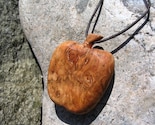 Dark shadows around your items are no one’s friend. They can make the photograph look cluttered and detract from the item itself, sometimes making it difficult to see properly. Moondogfarm has picked a great background for her necklace, but the shadow behind the pendant makes the photo feel uneven.
Dark shadows around your items are no one’s friend. They can make the photograph look cluttered and detract from the item itself, sometimes making it difficult to see properly. Moondogfarm has picked a great background for her necklace, but the shadow behind the pendant makes the photo feel uneven.
The trick to avoiding hard shadow lines is to diffuse the light hitting it. If you’re taking photos inside try shining your lights through a thin sheet of white tissue paper, or bouncing the light off a white card instead of aiming it directly at the object. If you take outdoor photos try to take your photos early in the day or later towards the evening rather than in the afternoon when the sun is directly overhead. A slightly overcast or cloudy day can be a great day to photograph.
Beware the crop
Almost every online marketplace will resize or crop your photos in some way. Make sure you take this into consideration with your photos! This can be especially difficult with larger items.
 Bytheway‘s vintage maternity dress features some nice details in the sleeve and collar, but unfortunately Etsy’s center crop means all we see is a navy blue stomach and part of an arm. But as sellers, we don’t have any control over that, so we need to do our own cropping before we upload. By trimming off the bottom of the original photo the crop is pushed up, including the collar and sleeve. You can (and should!) still use the second through fifth images to show the whole item.
Bytheway‘s vintage maternity dress features some nice details in the sleeve and collar, but unfortunately Etsy’s center crop means all we see is a navy blue stomach and part of an arm. But as sellers, we don’t have any control over that, so we need to do our own cropping before we upload. By trimming off the bottom of the original photo the crop is pushed up, including the collar and sleeve. You can (and should!) still use the second through fifth images to show the whole item.
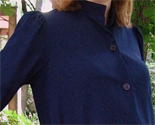 Cropping the image just below the chest changes the aspect ratio of the photo and gives us a much more favorable crop (shown right). Just be careful you don’t cut it too short or you’ll start to lose some of the sides of the photo.
Cropping the image just below the chest changes the aspect ratio of the photo and gives us a much more favorable crop (shown right). Just be careful you don’t cut it too short or you’ll start to lose some of the sides of the photo.
A lot of sellers choose to chop off their model’s heads in photos. Showing your full model (head included) in a photo can be helpful for buyers to get a feel for how the item drapes and falls, and your model’s head buys you some space above the shirt/dress. So when the image is center-cropped you’ll still be able to see the collar and shoulders of the item. Confused? Check out TheVelvetVixen’s photos: here’s the original in the listing, and here’s the cropped version.
Avoid busy backgrounds
 KnotOriginal has clearly put some time into her staging, and her photos are interesting and engaging as a result. She has a beautiful scarf on the left, and a mannequin to display it on… but it’s lost in the complicated background. The horizontal lines of the railing and vertical lines of the ships’ masts draw the eye away from the scarf. Busy backgrounds compete with your item for attention. You want people to see your item, not where you took it.
KnotOriginal has clearly put some time into her staging, and her photos are interesting and engaging as a result. She has a beautiful scarf on the left, and a mannequin to display it on… but it’s lost in the complicated background. The horizontal lines of the railing and vertical lines of the ships’ masts draw the eye away from the scarf. Busy backgrounds compete with your item for attention. You want people to see your item, not where you took it.
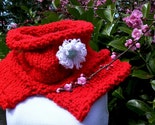 But that doesn’t mean you’re doomed to a life of white backgrounds. In fact white backgrounds are best avoided. They can be hard to photograph because they throw off your camera’s metering, and generally aren’t very interesting. Look at the photo on the right (also by KnotOriginal). The leaves in the background add texture without taking away from the item, and the contrasting color help it stand out.
But that doesn’t mean you’re doomed to a life of white backgrounds. In fact white backgrounds are best avoided. They can be hard to photograph because they throw off your camera’s metering, and generally aren’t very interesting. Look at the photo on the right (also by KnotOriginal). The leaves in the background add texture without taking away from the item, and the contrasting color help it stand out.
Don’t let your edges show
 If your background is a flat surface or plane, such as a table top or floor, take care not to let your edges show. Like a busy background it can detract from the item, drawing the eye away. The example on the left by andtherainfell is pretty mild – just a corner of a the window peeking in – but it’s still best avoided. And I’ve seen some really painful examples of this browsing Etsy.
If your background is a flat surface or plane, such as a table top or floor, take care not to let your edges show. Like a busy background it can detract from the item, drawing the eye away. The example on the left by andtherainfell is pretty mild – just a corner of a the window peeking in – but it’s still best avoided. And I’ve seen some really painful examples of this browsing Etsy.
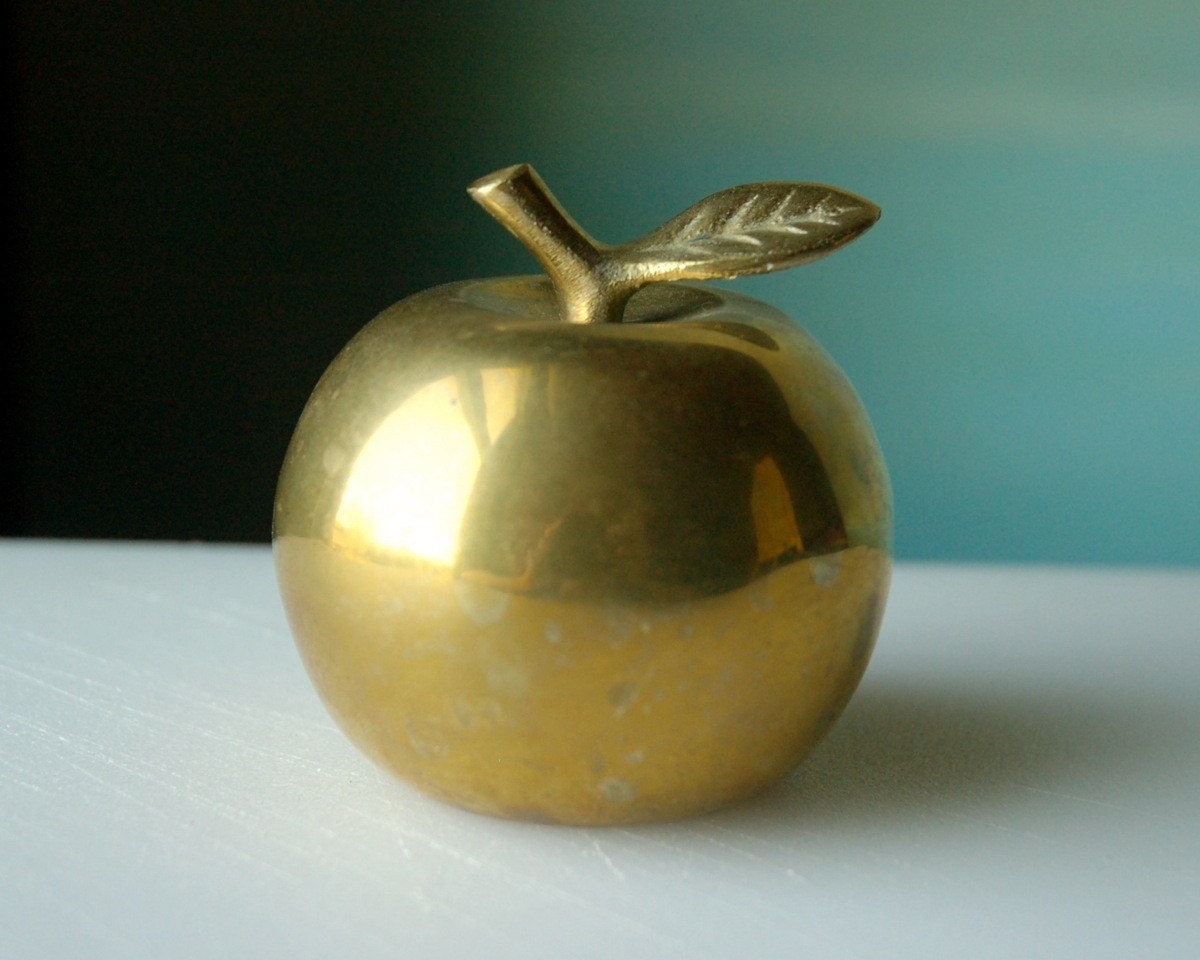 Try changing your angle or crop to get rid of any unsightly edges. If you don’t have the luxury of a huge surface, or have larger items to photograph, work with your edges instead of against them. Try propping an item up against the wall, or bring other objects to serve as a backdrop and create visual interest. Just don’t let it get too busy. Using a shallow depth of field can also soften changes in your background, like domestikate’s photo on the right.
Try changing your angle or crop to get rid of any unsightly edges. If you don’t have the luxury of a huge surface, or have larger items to photograph, work with your edges instead of against them. Try propping an item up against the wall, or bring other objects to serve as a backdrop and create visual interest. Just don’t let it get too busy. Using a shallow depth of field can also soften changes in your background, like domestikate’s photo on the right.
Unbalanced White Balance
 Do your natural light photos have a bluish tint to them? You may want to check your camera’s white balance setting. Most digital cameras have settings for daylight, tungsten (incandescent lights) and fluorescent lighting. Select the option that best fits where you’re taking your photos. If possible, shoot your photos in RAW format, this saves the raw data without assigning a white balance profile to it. Instead you’ll select the appropriate lighting option when you convert the photos on your computer. Check the software which came with your camera or use a program like Photoshop to manipulate RAW files.
Do your natural light photos have a bluish tint to them? You may want to check your camera’s white balance setting. Most digital cameras have settings for daylight, tungsten (incandescent lights) and fluorescent lighting. Select the option that best fits where you’re taking your photos. If possible, shoot your photos in RAW format, this saves the raw data without assigning a white balance profile to it. Instead you’ll select the appropriate lighting option when you convert the photos on your computer. Check the software which came with your camera or use a program like Photoshop to manipulate RAW files.
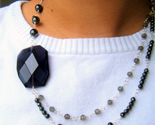 If your camera doesn’t support changing the white balance, you don’t want to mess around with RAW files, or you’ve already taken your photos, you can still tweak the levels a little bit in a photo editor such as Gimp (free) or Photoshop (not so free). On the right we have the same photo, but after using Photoshop’s “auto color” option. Note that “auto color” won’t work well on all photos, particularly ones without a lot of contrast. If you aren’t happy with “auto color,” hit undo and go to Image > Adjustments > Color Balance. Move the top and bottom sliders slightly away from cyan and blue to warm up your image.
If your camera doesn’t support changing the white balance, you don’t want to mess around with RAW files, or you’ve already taken your photos, you can still tweak the levels a little bit in a photo editor such as Gimp (free) or Photoshop (not so free). On the right we have the same photo, but after using Photoshop’s “auto color” option. Note that “auto color” won’t work well on all photos, particularly ones without a lot of contrast. If you aren’t happy with “auto color,” hit undo and go to Image > Adjustments > Color Balance. Move the top and bottom sliders slightly away from cyan and blue to warm up your image.
Pass up the white background
 On the subject of white… sometimes a white background is best avoided all together. White backgrounds can be extremely tricky because they cause your camera to think the scene is lighter than it is, which can result in an underexposed photo. It also accentuates any unevenness or “hot spots” in your lighting. Post-processing with programs like Photoshop make things a little easier, but even then it can be hard to get an image that has natural looking shadows and edges.
On the subject of white… sometimes a white background is best avoided all together. White backgrounds can be extremely tricky because they cause your camera to think the scene is lighter than it is, which can result in an underexposed photo. It also accentuates any unevenness or “hot spots” in your lighting. Post-processing with programs like Photoshop make things a little easier, but even then it can be hard to get an image that has natural looking shadows and edges.
 Colored backgrounds tend to be much more forgiving. Linen fabric makes a good backdrop, or lightly patterned cotton. Stay away from velvet unless you really know what you’re doing – it’ll look cheap if you don’t. And for heavens sake iron your fabrics before you photograph on them, everyone can tell when you just chucked an item onto the bed to photograph it.
Colored backgrounds tend to be much more forgiving. Linen fabric makes a good backdrop, or lightly patterned cotton. Stay away from velvet unless you really know what you’re doing – it’ll look cheap if you don’t. And for heavens sake iron your fabrics before you photograph on them, everyone can tell when you just chucked an item onto the bed to photograph it.
Practice Makes Perfect
Taking good product photos is an iterative process. You just have to do it a lot to get good at it. Reading photography articles is great, but at the end of the day you just have to sit down and try a bunch of different things to see what works for you. Try not to get discouraged, it’ll come slowly but surely.
Thanks for the advice Kellbot, it wasn’t even painful!;-}
I am constantly struggling with photographing my cards. I agree with all of the suggestions you gave above and have fallen into many of those ‘don’t ‘ traps. I will try some more pictures today! Thanks for the inspiration!
Jen
Jennifer, have you tried scanning them? I scan all kinds of stuff and it often works great!
Sarah
way to go, nail-on-the-head-hitter! i can’t agree more strongly about avoiding a white background. your products don’t exist in some crazy white vacuum void, and there’s no reason why your photos should make them look like they do. a really clean (yes, unwrinkled, totally) neutral background can work wonders for even the silliest items.
you rule – so well said!
HI Kelly, at long last have redone the vintage necktie listing. Not yet perfect, but a whole lot better IMHO. Blogged it here http://glorioushats.blogspot.com/2009/08/continuing-photographic-efforts-to.html Thanks so much. Jane
Thank-you Kelly,
I am new of Etsy, made 2 sales in 3 months 🙂
learning a lot from you!
Leila
Now I am confused!! I read only the other day on another ‘helpful’ piece of advice forum, that it is IMPERATIVE to use all white backgrounds for items to be sold on Etsy!
Which is correct? How do I know what to believe?
I was just about to re-do all my pics on all white backgrounds – now this is wrong too??
Isn’t it all just personal preference? Are there really any hard and fast rules on this?
It’s ultimately personal preference. My opinion is that unless you know what you’re doing, you’re going to make your photos look worse in the process.
Anyone who thinks white backgrounds are imperative can kiss my 1600+ sales. I have exactly one photo on a white background.
Thanks for your very simple comments on taking good pictures.
Thanks for the tips! : )
Thanks for this post and the other one about selling on Etsy! These tips are great. I also wanted to thank you for being direct to your points. Thanks again!
There are the definate good and the definate bad. Not all of us can affored expensive cameras. I think people on Etsy spend far too much time on photographs, this can be counter productive. There isnt a law that says you shouldnt have a white background. A lot of professionals use white background for their jewellery. The well known ones whom have celebrity client. They started off handmaking their own and now millionaires. I doubt anyone onf Etsy has made their millions yet. People do their best and thats all they can do, why stress people out saying they should do this and do that, this is wrong and that’s wrong. As long as the photo is decent enough what does it matter. And no we’re not photographers!!
As a buyer of etsy goods:
I’ve seen so MANY photos on etsy where I just can’t see what the object looks like. Or the scale. Or the detail.
I’ve also passed by many items because their tiny thumbnail photograph just didn’t stand out as I scrolled through hundreds of items.
A decent photo communicating enough information about the product also lets me feel like I can trust the seller; that they’re careful and professional.
I couldn’t agree with you more, Chris. Photographs are communication; they contain information. They don’t have to be great art, but they do need to be clear and attractive.
They are also an indication of a person’s approach to their work. When I can’t see the item clearly, that’s when I click the “back” button on my browser and go on to something else. If the artist has taken the time to learn a few simple photographic principles, I think it’s safe to assume they’ve taken time to attend to other details, too.
Good photographs need to be accompanied with good descriptions: what size is it? How thick is it? How long is it? What does the back look like?
As for background: do whatever makes your product look best. This is not an opportunity to do something clever; this is where you showcase your product to the best of your ability. The necklace may look cute on your dog, but that doesn’t show me how long it is on a person. You may love-love-love that new plate, but if the design on it fights for attention with your product, I may just start Googling “red plate with basketweave design”.
Etsy gives you room for several photos; that’s your opportunity to tell your customers everything they want to know about your product.
I’m thankful for the specific guidelines and the example photos….now I have a to do list….re-photograph. I don’t have a fancy camera though..but I think that I can improve the photos with this great advice.
Good points; will try tweaking the pics. I’ve always been told to shoot things against a white background (unless they’re white or very light colored), and figured I was an idiot for thinking they lacked context.
This is one of the best pointers I have read in a year. Thanks so much and I am going to get out my camera right now and do over some of our work. It only seems logical that we put so much attention into making and designing our work, and then have the viewer see a sloppy non-caring photo of it. Thanks again.
Thank you for the helpful hints, and I have to say that I am terrible at taking photos of ts that are wrinkled…. That will have to be something to work on, I just wish someone would fill me in on the best way to take a photo of a child’s t, with a model I often loose what is on the t itself…. on a hanger it looks flat and cheap. any help would be appreciated……
Thank you for the pointers. I am so guilty of the heavy shadows. I am new to Etsy and futhermore new to photography. I never thought to diffuse the lighting with tissue paper. What a great idea! I will definitely use this in the future. Thanks again.
These are great tips. I’ve noticed adding a simple color to a background gives character to the picture, thanks a lot!
I think another helpful hint would be to take the photos at interesting angles. Whenever I am going through Etsy, I hate seeing all the photos be just one angle: the full product. I think it’s much more interesting to take a photo on an angle and show some details in the product first. Obviously you want to include at least one picture of the full product, but other angles sure do help!
These days, a “decent camera” doesn’t necessarily mean an expensive camera.
I also tried scanning my jewelry using my scanner. It’s pretty easy, but really only works for flat pieces. I thought it was a crazy idea at first, but it does work!
It works, but it very rarely actually looks good. Generally when I see 3D items like jewelry shoved on a flatbed scanner I can tell.
thanks for this. I agonize over my pictures so much – glad to know I’m not alone! The tips are all so useful and basic – good to keep in mind.
any tips on taking photos of art work paintings? I haven’t sold one item and am discouraged
What about taking photos of 3D art? Your tips are useful , but is there an interesting way of taking photos of 3D art apart from a straight reproduction, either scanner or photo?
Thank you so much for your straightforward tips. I also am new to Etsy and am racking up the mistakes. Maybe that’s why I haven’t sold anything. My self-esteem is being blown to smithereens as we speak! But I have one puzzling question. When I am displaying plus size T shirts, should I use plus size models or do like the magazines and use smaller models to make them look better? Also, I am using live models that don’t want their faces displayed. Do you think large half size forms would work?
Thanks Again for sharing your tips.
Thank you for these extemely helpful tips. I agree that white backgrounds can be ‘difficult’, however my sleep masks look fabulous on white – I’ve tried other backgrounds – but white just seems to work best 🙂
Wonderful. We are always open to suggestions and constantly trying to improve on photography, thanks for all the information.
I am a Landscape photographer and Potter. But shooting pottery indoors is a whole other ball game. You must control the LIGHT! I did not have the money for a good light set up, so I used what I had laying around. With digital cameras and Photoshop or use Photoshop elements(much cheaper or even free some timess) You can do wonders. I set up an area next to a window in our show room for shooting the pottery and jewelry my wife makes. I like the way black looks as a background but it hides to much of the pottery but looks great for the Copper and brass work my wife does. So for the pots I useda few yards of gray wool with it draping down in a arc so it shows no edges in the back ground it hangs over the front but I make sure I don’t shoot that area. Always use a tripod! A cheap one will do.But you must be able to hold that camera still. This is so important I cannot say it enough. The images must be sharp. Have lots of lights hitting the object from all 3 sides. I use our showroom spotlights and two sets of track lights ina set of 4 lights each on some old mike stands and another flood light on a stand. I use the built in flash on my Nikon D200 (a far cheaper camera just as well as long as it can be put on a tripod) I set the white balance to Auto and keep the f stop small like at f.22 this increase the depth of field which allows more of the image to be in focus. I would rather underexpose than over. It can be adjusted in PS using levels and color balance . So I use the center or spot meter built into the camera to expose for the highlights in the camera. The great thing about all of this is that you can experiment till you find a combinations that work for you. In the days of film you had to use expensive light set ups to get the color correct I also us a “SAD Light” suspended from the celling for over head light. I try to get it right in the camera so not to much time is spent in PS. There are so many creative ways to set up a system that will work for you and some great articles here on ETSY. I would like to get a softbox and use a light box that I have and some translucent colored paper for Back grounds. For one type of item, say in my case pottery use the same background for all the pottery shots. Looks more professional. A great source of photo information can be had at http://www.photo.net
Have been paying a photographer. Now that you have made me aware of what you consider are the best cameras, will investigate and purchase. Thank you
I really appreciate the advice.
As a newbie, there is a lot to learn. Having pseudo-professional photography knowledge and skills to sell your products, no matter how well-done they are on their own, has been a huge eye-opener to me. The obstacle being: “What consitutes ‘good photos’?” You can hear that they need to be good and think you have accomplished that without a standard to consult like this one. It is important to know what you are trying to avoid as much as to achieve.
I have heard it said many times before: “A good product sells itself.” Maybe at one time, but not anymore, and certainly not online. Thank you for this helpful advice.
I am a complete newby at selling on etsy. and i am getting SOOOOO FRUSTRATED! lol okay…breathe alyssia…breeeeeathe. So, heres the deal…Im not selling….anything. Well, Ive sold two things to family members. But that doesnt really count. I ended up on this page from a link on another one of your blogs about how to sell stuff on Etsy. I think I am doing okay with the pictures? I dont know…but I am very very frustrated. Is there anyway you could take a look at my shop and give me some advice?? I’m trying to make different things, and am buidling onto my customizable items shop section, but the fish just arent biting. I love what I do I looove making crocheted items but I’m just not making anything off it yet. Please please any advice would help!